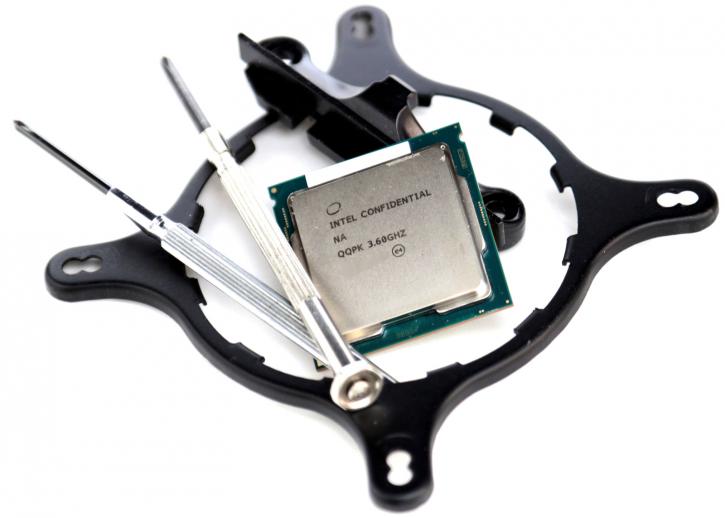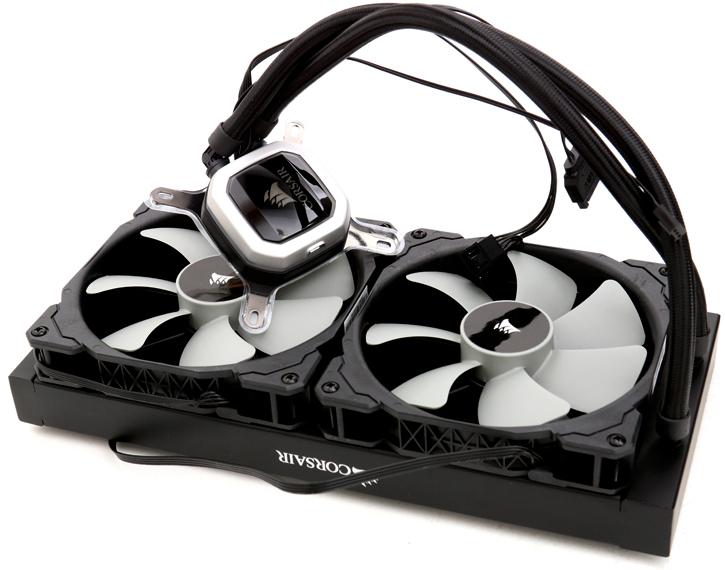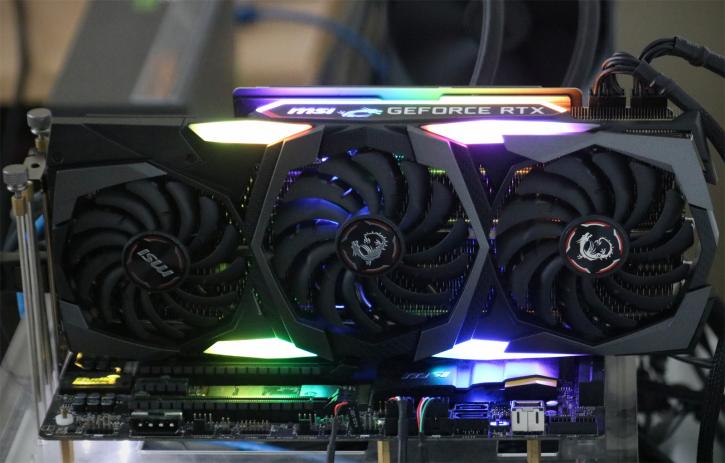The High-End Build
High-End Gaming
Here, we are - ideally - targeting 1440p gaming, preferably at a high refresh rate if possible. There is, however, a small problem, which I will outline specifically in the GPU section at the end. CPU choice also begins to become a real factor, now, as whilst Ryzen Gen 2 can certainly 'do' high refresh rate gaming, Intel chips (thanks to their higher clock rate) are generally considered a better option.
This will also be our first sighting of Turing as a recommendation, though only the more entry-level options.
CPU - Intel
Yep, two sections here. I know what I said above, but AMD still remains an option, and a wallet-friendly/high performing one, at that. If, however, you wish to go for Intel, then you have two main options.
The first is the 'old' (heh, calling it old seems absurd) i7 8700k, the undisputed gaming champion of Coffee Lake and most of 2018. Make no mistake, it is a fast, hot, and expensive chip, but it games excellently. Coming it at the mid 300's in terms of pricing, it offers 6 cores, 12 threads, and the ability to overclock north of 5Ghz if cooled correctly. There really isn't much more to say on this point, so we'll move onto my next choice (which might well prove a little... controversial?).
The next choice is Intel's new Coffee Lake-S i7 9700k, the first i7 since their inception back with Nehalem to lack Hyperthreading. It does, however, come with 8 cores, as opposed to the 8700k's 6. That said, it lacks threads, so why am I recommending this processor, especially when it's more expensive? The results really do speak for themselves, and you can find our review of the 9700k here.
In each test, it manages to outperform the 8700k by degrees that are nowhere near margin for error. It's a faster processor, and that is a fact. If anything, the 9700k is the biggest proponent of 'real cores are better than fake ones' each and every time. Either chips are great choices for high refresh gaming at any resolution, and can also take a fair bit of content creation/creative work, if they need to.
CPU - AMD Ryzen R7 2700X
Until the release of Zen 2, we all have to concede that - in gaming - Intel CPUs are generally superior from degrees ranging from 'a bit' to 'notable difference.' That does somewhat depend on what resolution and GPU you are using, of course, but I digress. However, despite this being a high-end build, people's wallets aren't endless, and AMD provides a genuinely compelling option in their 2700X. When using appropriate resolutions and in-game quality settings, the playing field can be levelled more at the old 1080p struggling point that we see so often with Ryzen chips, caused entirely by clock rates and - potentially - a small IPC lead.
That said, if you were to purchase a 2700X and pair it with 'see GPUs below,' you wouldn't have a bad experience at all, and I mention AMD because A) I should, B) They provide another compelling option at a lower price bracket, and that is it. You'll likely get more out of the GPUs below, at lower resolutions and high-refresh rates, with Intel. That is a fact.
Motherboard (Intel) - Asus Prime Z370-A or Gigabyte Z390 Aorus Pro, AMD - Asus X470 Prime Pro
We (well, Hilbert) initially had some reservations over this board being too expensive at $200. It has since come down in price to a more reasonable 170, which is - I feel - more appropriate. Whilst it does lack WiFi and 5/10Gb ethernet, these aren't features normally found on sub $200 boards, so it can be forgiven. I think it's also safe to say that if you need WiFi, then a small 25-30 USD investment in an 802.11ac capable NIC isn't going to break your bank? I know that Hilbert has mentioned the need for faster NICs as standard for a while now, but the fact remains that the sub 200 USD market is still stuck with 1Gb, and I don't think that's going to change anytime soon.
Anyway. It has excellent build quality, looks a treat, has RGB (...duh), and sports a very solid VCore VRM for overclocking your 8th Gen CPU. Enough said!
If you choose to go for the 9700k, then take a look at the Gigabyte Z390 Aorus Pro. We reviewed it here, and despite similar gripes to the above Asus board, it also comes to the party with high levels of build quality, a good feature set, solid VRM, and great looks. That is really the 2018/19 motherboard tick list in a nutshell.
In the AMD/AM4 corner, we have gone for Asus' very sleek looking X470 Prime Pro. Sporting a white aesthetic (much like the Intel variant), it features all the usual high-end Asus bells and whistles. Solid VRM, great looks, future support for Zen 2, good I/O, and allows the 2700X to exploit XFR2 and Precision Boost if left to its own devices.
CPU Cooler - Corsair H115i Pro, Noctua NH-D15, BeQuiet! Dark Rock Pro 4
In terms of AIOs to go for, this might be a controversial choice, but - to me - over 160 USD on the RGB version of this 280mm AIO is just too much to ask. That is why I have gone for the 'plain' version of the cooler. We reviewed its 240mm, cousin, some time ago, linked here, and the RGB version of the 280mm cooler here. The performance is good, and it features Corsair's usual 'Link' software, from which you can control the pump/fans from the desktop without having to fiddle about in the BIOS. I have used the software before, and it's very decent. If you must have the lighting, prepare to pay an extra 50-60 USD for the honor.
That isn't the end of the story, however. Whilst your big 280/360mm AIOs may provide the best possible cooling performance, that isn't what some are after. Massive air coolers like the above mentioned NH-D15 or DRP4 can be extremely comparable in performance, all whilst holding several key advantages. Anyway, what are the plus sides of tower coolers? The first is clear, reliability. There are virtually zero points of failure on an air cooler, save for the fan, and even then the heatsink alone with probably do a decent job of passively cooling the CPU, until you realise your chip is a bit toasty. Crucially, though, no leaks. The second is fairly obvious as well, and that is noise (though this is nowhere near the issue it once was) An AIO has flowing liquid, a pump, and fans.
I should also note that whilst there are other options for dual tower coolers, I am picking ones that I know can handle the 8700k or 9700k, though even then you will need to be careful about thermals.
RAM - 16GB, 2x 8GB,3200Mhz or above
Really no point getting more than 16GB, still. Unless you plan to heavy multi-task on your PC, the most intense thing you'll be doing at any one time is either gaming or using creative apps. 16GB is still entirely fine, except in circumstances that I would hope you, as a buyer, would know about beforehand.
In terms of what to buy, the world is really your oyster. RAM prices are pretty good, again, so a solid set of flashy RGB enabled memory at above or at 3200Mhz should be easily achievable. If you want to pay more for faster speeds, or binned Samsung sporting kits, then be my guest. I won't make specific recommendations here because they're very difficult to make with RAM. Either it is RGB or isn't, and is Samsung or isn't. I have had good luck with the higher end Hynix MFR memory on Ryzen Gen 1, so that should give new and prospective buyers into the AM4 platform something to chew on. Essentially, if I can get my Hynix 3200Mhz kit running at 16-16-17-35 on Summit Ridge CPUs and boards, then so can you.
Storage
You'll notice that, up till now, the ever popular M.2 NVMe form of storage has been absent. That is conscious, as they are usually measurable more expensive than their 2.5'' or M.2 SATA cousins, and I have been focused on getting maximum performance out of the PC in terms of CPU and GPU horsepower. Now, however, we have a little bit of headroom. Bearing that in mind, there are multiple configurations you can use, and what you end up going with will very much depend on your use case.
Gamer only? Well, look no further than a 1TB NVMe SSD. We liked two different units. First up is Corsair's new Force MP510 NVMe drive. Whilst we did notice some thermal throttling on the controller under sustained load, this isn't a scenario that most should encounter, and most mainboards in 2018/19 come with M.2 heatsinks (and are inside cases with airflow). Performance on the drive was extremely impressive, and you can find the review of it here. The second unit that we really liked is AData's XPG SX8200. Featuring TLC NAND with their proprietary SMI SM2262 controller, you can expect sequential reads/writes in excess of 3000/1500 MB/s. That is, needless to say, damned quick. You can find the review here. Hilbert did find, again, evidence of throttling under sustained load, but that is solvable by the same measures as written above.
Power Supply
As one might predict, my choices from the previous page can carry across, with some caveats. First is drop the 80+ Bronze options. 80+ Gold or go home. Second, ignore 550W options, and look in the 650-750W capacity range. You will be thankful for it, trust me. Third, you can look into higher rated PSUs in the 80+ Platinum range, e.g. Corsair's RMi, EVGA's P2/P3, or Seasonic's Focus Plus Platinum. You are looking for the best, at this point, with ample headroom, all Japanese caps, and high efficiency.
Graphics Card
Ooooh boy... ok, here we go. Having done a quick look on PCPartPicker, it would appear that stocks of 1080s and 1080Ti's is really starting to dry up. The same, sadly, goes for 1070s and 1070Ti's. Well, they're not dried up, but they are pricey. Anyway, high-end Pascal stocks have dried up so much so that Turing is starting to make a lot more sense. With that said, what are my recommendations for a high-end gaming build's GPU in late 2018?
There might be those wondering why I went with the much more expensive 8700k/9700k over the 8600k/9600k, especially when it might allow more headroom for GPU horsepower? Well, the truth of the matter is that I just don't trust 6 cores/6 threads in 2018, especially in a gaming world that has seen truly rapid expansion to multi-threaded rendering and CPU workloads. I know I would hate to see my $500 RTX 2070 held back by even an overclocked 8600/9600k, purely because they lack threads.
Anyway, back to the GPU. Our recommendation is fairly easy, with a proviso. In an ideal world, Nvidia's new RTX 2080 is the 'best' choice, especially after stock of the old 1080Ti is all but dried up. However, given the extremely high price of both the Turing series in general, as well as the hefty premium on G-Sync, and 'high end' suddenly commands a major budget uplift over the price point of the previous mid-range build. This presents a problem, for sure. Do I feel comfortable in recommending such a high-end GPU when the ideal monitor to go with it (at least 1080p 144hz, and sporting G-Sync) will add another lump sum to the budget? Absolutely not. That is nearly or just over $1000 for the GPU and monitor alone, and there is a limit to 'high-end'...
So, how to get around this problem? Well, there are two ways. One, just accept that is is going to be expensive, and realize that a 2080 build with even a 60Hz 1440p monitor is going to run you around $2000. If you want a 144hz 1440p panel with G-Sync, then add another 200, at least.
The other way around this issue is to downgrade, simple as that. Whilst not having the 1080Ti like the performance of a 2080 will be irksome, pairing a decent 2070 with a high quality 1080p 144hz/165Hz panel might well be the best option at this point. It is still a very fast GPU, and playing at 1080p isn't exactly a curse, especially with maxed out in-game quality settings, or the option to increase internal resolution render scales.
Are you not, perhaps, interested in 144hz? Do you only play strategy/RPG games? Well, spend the dollar on a 1440p 60hz panel, then. I won't judge, at all. I did the maths, and an R7 2700X/RTX 2070 build can be done for just over 1,500 USD. Want to definitely drop it below the 1500 mark? It's not the best solution but go for an 8600k/9600k. They'll still spit out frames like nobody's business, but expect some titles to push the CPU pretty hard.
Now... what about Vega? Well, actually, what about old Vega, and new Vega? We know that Radeon has absolutely nothing to counter the 2080 Ti, and that much is clear. However, Vega 64 is still an alternative to the RTX 2070, albeit with the caveats and limitations that comes with. Furthermore, Radeon VII is your 'Team Red' counterpart to the 2080 (with some caveats, again), and - if it does actually retail for that $700 MSRP, it'll be around the price point of the RTX 2080. I have no doubt at all that Radeon VII will get better, for sure, in much the same way that Vega 14nm got 'better' over time. It went from being a card I wouldn't have bought at all, to one I would buy and recommend, if you're up to a little tweaking.
The old trump card of Freesync has now had its impact reduced somewhat due to Nvidia finally adopting (or at least allowing) for the use of Adaptive-Sync on its GPUs via a driver update.
I suspect I will get a lot of flack for this section (mostly for my stance on CPU choice on the Intel front, as well as daring to recommend/mention the 2700X or Vega, in either of its guises), but all I am trying to do is to present options, and cater to a variety of budgets and/or circumstances. We all have common sense, use it and decide what budget you have and what works for you.





